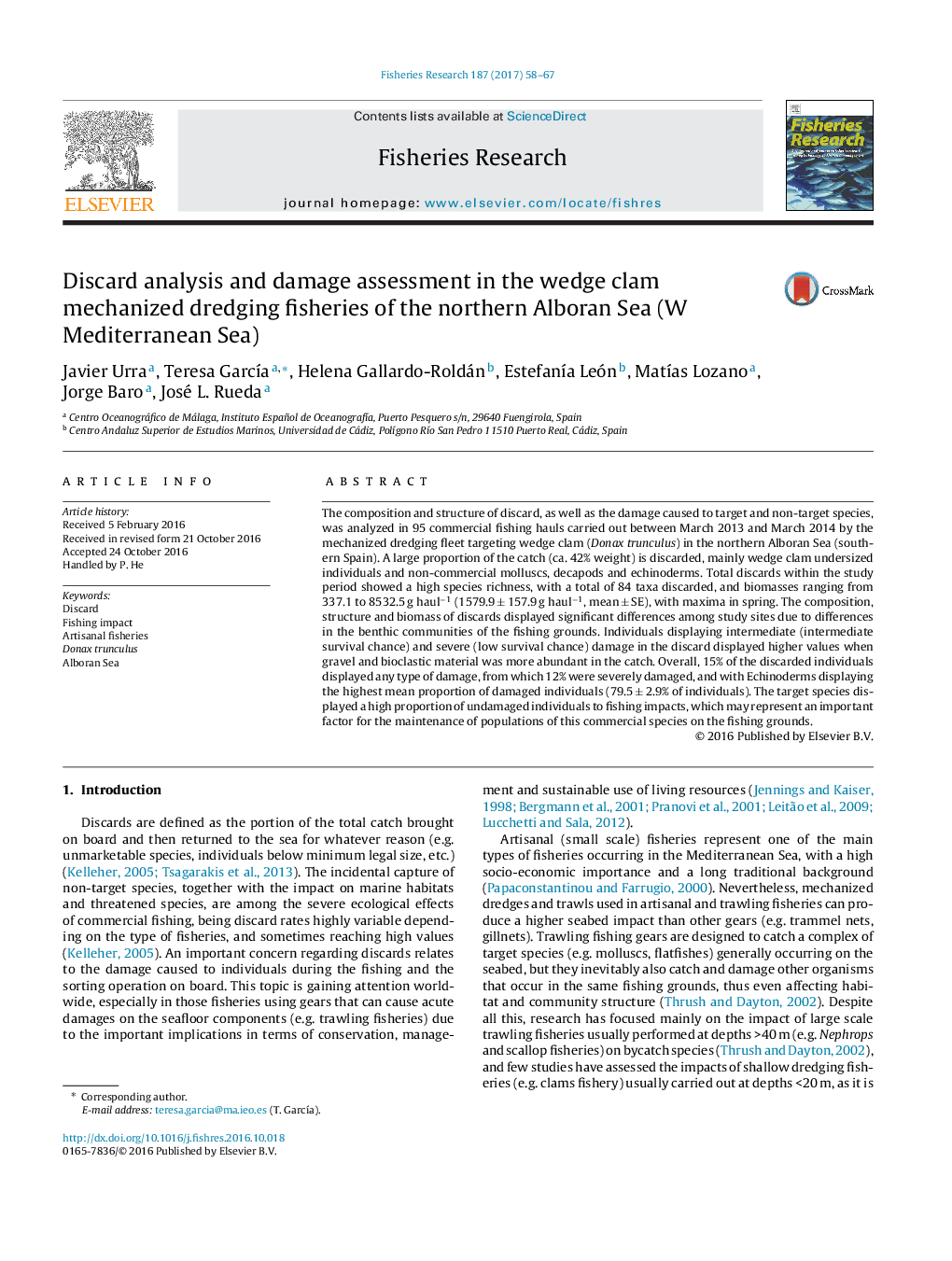| Article ID | Journal | Published Year | Pages | File Type |
|---|---|---|---|---|
| 5765643 | Fisheries Research | 2017 | 10 Pages |
Abstract
The composition and structure of discard, as well as the damage caused to target and non-target species, was analyzed in 95 commercial fishing hauls carried out between March 2013 and March 2014 by the mechanized dredging fleet targeting wedge clam (Donax trunculus) in the northern Alboran Sea (southern Spain). A large proportion of the catch (ca. 42% weight) is discarded, mainly wedge clam undersized individuals and non-commercial molluscs, decapods and echinoderms. Total discards within the study period showed a high species richness, with a total of 84 taxa discarded, and biomasses ranging from 337.1 to 8532.5 g haulâ1 (1579.9 ± 157.9 g haulâ1, mean ± SE), with maxima in spring. The composition, structure and biomass of discards displayed significant differences among study sites due to differences in the benthic communities of the fishing grounds. Individuals displaying intermediate (intermediate survival chance) and severe (low survival chance) damage in the discard displayed higher values when gravel and bioclastic material was more abundant in the catch. Overall, 15% of the discarded individuals displayed any type of damage, from which 12% were severely damaged, and with Echinoderms displaying the highest mean proportion of damaged individuals (79.5 ± 2.9% of individuals). The target species displayed a high proportion of undamaged individuals to fishing impacts, which may represent an important factor for the maintenance of populations of this commercial species on the fishing grounds.
Related Topics
Life Sciences
Agricultural and Biological Sciences
Aquatic Science
Authors
Javier Urra, Teresa GarcÃa, Helena Gallardo-Roldán, EstefanÃa León, MatÃas Lozano, Jorge Baro, José L. Rueda,
